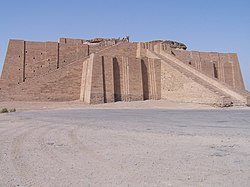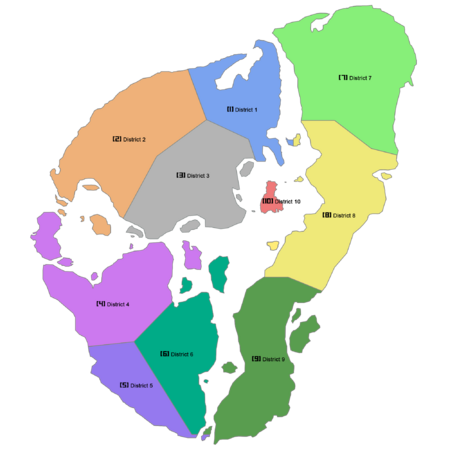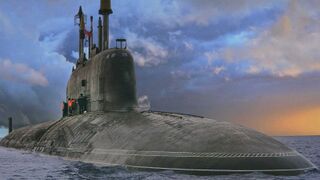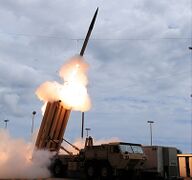Ionicus: Difference between revisions
| (12 intermediate revisions by the same user not shown) | |||
| Line 120: | Line 120: | ||
===Prehistory and Ancient Ionicus=== | ===Prehistory and Ancient Ionicus=== | ||
[[File:Ancient_ziggurat_at_Ali_Air_Base_Iraq_2005.jpg|250px|thumbnail|left|The Ziggurat of Mikor]] | [[File:Ancient_ziggurat_at_Ali_Air_Base_Iraq_2005.jpg|250px|thumbnail|left|The Ziggurat of Mikor]] | ||
The oldest known human activity on the Ionician islands, a series of rock carvings in the northern desert region, dates to approximately 8000 BCE. By around 6000 BCE, a {{wpl|neolitchic}} society had begun to develop. | |||
Etc. etc. | |||
===Akarovian Empire=== | ===Akarovian Empire=== | ||
| Line 136: | Line 137: | ||
====Reconstruction Era==== | ====Reconstruction Era==== | ||
1935-1970. | [[File:Construction_crew_on_steps_of_campus_building_1911_(3191463436).jpg|thumb|right|250px| Conscripted workers, such as these, played a major role in rebuilding war torn Ionicus]] | ||
The Reconstruction Era in Ionicus began in late 1935, once the newly founded government of the Ionician Technate had solidified control of the nation. On February 1, 1936, the First Constitution of the Ionician Technate was officially adopted and created the foundations of the new government. Although the Constitution guaranteed several political and social freedoms such as {{wpl|democracy}} and {{wpl|freedom of speech}} these freedoms were suspended until order could be restored to the majority of the nation. The early government is frequently cited as an example of a {{wpl|benevolent dictatorship}}. | |||
The Great Ionician Revolution had destroyed several parts of the nation and crippled the already weak economy. The new government viewed the country as a ''malplena ardezo'' or a blank slate for them to fill with the principles of [[Ionician Technocracy]]. As a result of this, the {{wpl|phoenix}} became an important national symbol, as it was thought that the nation would, like the phoenix, rise from the ashes. | |||
Reconstruction officially began in mid 1936 when a four year plan, later referred to as The First Plan, similar in concept to the Soviet Union's {{wpl|Five-year plans for the national economy of the Soviet Union|five-year plans}}. This First Plan was limited in scope and aimed solely at reestablishing the basic essentials for the populace following the revolution. Law and order was restored with the new [[Federal Police Force (Ionicus)|Federal Police Force]], temporary housing was constructed for those who had become homeless during the civil war, and many citizens were conscripted to work on farms to end the major food shortages experienced during these times. | |||
When the first economic development plan had ended in 1940, the Second Plan followed immediately afterwards with a proposed length of 5 years. The Second Plan centered around industrial and agricultural economic development. Again, this plan used the Soviet Union's 5-year plan as a basis for its ideas. State-owned farms were created using technologies such as {{wpl|soil science}} and {{wpl|Mechanised agriculture|mechanization}} and required agricultural workers to attend a basic educational course on modern agricultural techniques. These new state farms effectively ended food shortages and were responsible for the agricultural outputs far greater than had ever been seen before. The industrial economy also began to grow greatly during this time, as constructing new factories commenced after the food crises had been resolved. Industrial outputs at the end of the Second Plan were also higher than had been recorded before, though this was not especially difficult as the industrial sector had been nearly non-existent before this period. | |||
[[File:NASAComputerRoom7090.NARA.jpg|thumb|left|250px| One of the computing centers used to assist in the planning of the Ionician economy during the 1950s]] | |||
At the end of the Second Plan in 1945, most restrictions on the freedom of speech were lifted, and the economy operated without any major changes until 1950, when the Third Plan was put into place. The Third Plan was the most ambitious plan created both before and since its implementation. The Third Plan would bring major changes to both the economic and social structure of Ionicus and had a 10 year time line. The first accomplishment of the Third Plan was the electrification of all urban centers and some rural areas through the construction of {{wpl|nuclear power|nuclear power plants}}, {{wpl|Hydroelectricity|hydroelectric stations}}, and {{wpl|natural gas}} power plants. Another major accomplishment during the early years of the Third Plan was the relocation and rehousing of the vast majority of Ionicus's populace. Before the Third Plan was implemented the majority of the Ionician population lived in primitive wooden shacks in rural areas. Under the Third Plan, many of these wooden shacks were demolished and replaced with more durable concrete houses with amenities such as {{wpl|television}} and radio sets and air conditioning; this marked a great improvement in the living conditions for many. The implementation of modern agricultural techniques meant fewer people were required to work in agriculture, leaving many living in rural areas unemployed. The government addressed this by offering unemployed families in rural areas free, modern housing in urban areas in exchange for work contracts. | |||
[[File:1963_Sevir_Popolaŭto.jpeg|thumb|right|250px| The [[Sevir Popolaŭto]] became a symbol of the economic prosperity that followed the conclusion of the Third Plan.]] | |||
In order to make better economic decisions for the {{wpl|planned econonomy}}, the Third Plan also pioneered the use of {{wpl|computers}} to aid in sophisticated economic calculations and predictions. Economic outputs from factories and farms were sent via {{wpl|telex}} machines to a central facility in [[Khasde]] in near real time. A universal healthcare and educational system were another product of the Third Plan. Concrete molds for schools, clinics, and hospitals were transported all over the nation and filled on site allowing for rapid construction. This eventually led to the popular saying that "all buildings in Ionicus look the same". The Third Year Plan also included social reforms which created the [[New Ionician Society]], an idealistic, highly-educated, {{wpl|egalitarianism|egalitarian}} society. Overall, the Third Plan is considered a major success resulting in rapid and massive economic expansion, vastly improved living conditions, literacy rising from a mere 24.3% to nearly 99%, and life expectancy rising from 44.8 years to 69.6 years. | |||
After the Third Plan ended in 1960, the full freedoms proposed in the 1936 Constitution of the Ionician Technate were allowed. By this time, however, the Technocratic Party of Ionicus had gained the support of most and continued to hold control under a {{wpl|dominant-party system}}. Another major economic plan would not be created until 1970, when the Fourth Plan, was put into motion. The Fourth Plan, although limited in scope, would have wide-reaching and lasting effects on the Ionician economy. The Fourth Plan was aimed at the expansion of the electronics manufacturing sector and the widespread implementation of computers and {{wpl|robotics}} in the economy. The Fourth Plan lasted until approximately 1982, when the government allowed for large scale private enterprises to be formed; some aspects of the plan continue today through albeit through alternative means such as subsidization. The Fourth plan is frequently cited for the development and success of computer and automated manufacturing sectors of the Ionican economy which continue to hold great importance in present day Ionicus. | |||
====Economic Liberalization==== | ====Economic Liberalization==== | ||
On January 1st, 1982 private ownership of large companies became legalized. Almost immediately, several international corporations began to establish themselves within Ionicus. Ionicus was a prime choice for creating manufacturing and distributing centers due to lucrative automation subsidies and highly educated workforce. The resulting rapid and major economic expansion during this time is commonly referred to as the “Ionician Economic Miracle”. The economic growth stabilized for a brief period during the early 1990s before experiencing rapid growth again during the during the {{wpl|dot-com bubble}}. | |||
The resultant major economic growth during this period is often looked back as a time of great prosperity for the Ionician people. The major rise in incomes and international trade allowed for many to improve their living conditions and have greater access to good produced internationally. | |||
====Contemporary History==== | ====Contemporary History==== | ||
1990-onwards | 1990-onwards | ||
==Geography== | ==Geography== | ||
| Line 164: | Line 184: | ||
| District 1 || Medpo || style="text-align:right"|IDK|| style="text-align:right"|IDK || style="text-align:right"| {{wpl|Manufacturing}}, {{wpl|chemical industry|chemicals}}, {{wpl|transport industry|transport}} | | District 1 || Medpo || style="text-align:right"|IDK|| style="text-align:right"|IDK || style="text-align:right"| {{wpl|Manufacturing}}, {{wpl|chemical industry|chemicals}}, {{wpl|transport industry|transport}} | ||
|- | |- | ||
| District X || ??? || style="text-align:right"|???|| style="text-align:right"|??? || style="text-align:right"|??? | | District X || ??? || style="text-align:right"|???|| style="text-align:right"|??? || style="text-align:right"|??? | ||
|- | |- | ||
| District X || ??? || style="text-align:right"|???|| style="text-align:right"|??? || style="text-align:right"|??? | | District X || ??? || style="text-align:right"|???|| style="text-align:right"|??? || style="text-align:right"|??? | ||
|- | |- | ||
| District X || ??? || style="text-align:right"|???|| style="text-align:right"|??? || style="text-align:right"|??? | | District X || ??? || style="text-align:right"|???|| style="text-align:right"|??? || style="text-align:right"|??? | ||
|- | |- | ||
| District X || ??? || style="text-align:right"|???|| style="text-align:right"|??? || style="text-align:right"|??? | | District X || ??? || style="text-align:right"|???|| style="text-align:right"|??? || style="text-align:right"|??? | ||
|- | |- | ||
| District X || ??? || style="text-align:right"|???|| style="text-align:right"|??? || style="text-align:right"|??? | | District X || ??? || style="text-align:right"|???|| style="text-align:right"|??? || style="text-align:right"|??? | ||
|- | |- | ||
| District X || ??? || style="text-align:right"|???|| style="text-align:right"|??? || style="text-align:right"|??? | | District X || ??? || style="text-align:right"|???|| style="text-align:right"|??? || style="text-align:right"|??? | ||
|- | |- | ||
| District X || ??? || style="text-align:right"|???|| style="text-align:right"|??? || style="text-align:right"|??? | | District X || ??? || style="text-align:right"|???|| style="text-align:right"|??? || style="text-align:right"|??? | ||
|- | |- | ||
| District X || ??? || style="text-align:right"|???|| style="text-align:right"|??? || style="text-align:right"|??? | | District X || ??? || style="text-align:right"|???|| style="text-align:right"|??? || style="text-align:right"|??? | ||
|- | |- | ||
| District X || ??? || style="text-align:right"|???|| style="text-align:right"|??? || style="text-align:right"|??? | | District X || ??? || style="text-align:right"|???|| style="text-align:right"|??? || style="text-align:right"|??? | ||
|- | |- | ||
| Ionicus || Khasde || style="text-align:right"|???|| style="text-align:right"|??? || style="text-align:right"|??? | | Ionicus || Khasde || style="text-align:right"|???|| style="text-align:right"|??? || style="text-align:right"|??? | ||
|} | |} | ||
| Line 236: | Line 256: | ||
==Economy== | ==Economy== | ||
[[File:Chemical_Genomics_Robot.jpg|thumb|right|250px| Robotic equipment performing quality control at a chemical manufacturing facility in Ionicus]] | [[File:Chemical_Genomics_Robot.jpg|thumb|right|250px| Robotic equipment performing quality control at a chemical manufacturing facility in Ionicus]] | ||
The Ionician Economy is categorized as being very highly developed, having high productivity per capita, and as a mixed economy. Ionicus's high quality university education and government policies are often cited as the cause for the nation's prosperous high technology sector. Historically, state-owned enterprises comprised the bulk of the Ionician Economy, but economic reforms in the 1970s through the 1980s allowed for the development of a highly prosperous private sector and a resultant major reduction of state-owned enterprises. | The Ionician Economy is categorized as being very highly developed, having high productivity per capita, and as a mixed economy. Ionicus's high quality university education and government policies are often cited as the cause for the nation's prosperous high technology sector. Historically, state-owned enterprises comprised the bulk of the Ionician Economy, but economic reforms in the 1970s through the 1980s allowed for the development of a highly prosperous private sector and a resultant major reduction of state-owned enterprises. | ||
The base of the Ionician Economy lies in the {{wpl|manufacturing}} sector which comprises nearly 30% of the overall GDP of Ionicus. Nearly all of the manufacturing facilities in Ionicus are automated, due to heavy subsidization of robotic manufacturing equipment given in exchange for a small tax increase. International corporations frequently locate their manufacturing facilities in Ionicus, due to the low automated manufacturing costs. The largest exported goods are machines/electronics (53.2% of exported goods), chemical products (12%) and military hardware (8.7%). The {{wpl|service sector}} constitutes the majority of the Ionician Economy, with the largest sectors being {{wpl|information technology}}, finance, | The base of the Ionician Economy lies in the {{wpl|manufacturing}} sector which comprises nearly 30% of the overall GDP of Ionicus. Nearly all of the manufacturing facilities in Ionicus are automated, due to heavy subsidization of robotic manufacturing equipment given in exchange for a small tax increase. International corporations frequently locate their manufacturing facilities in Ionicus, due to the low automated manufacturing costs. The largest exported goods are machines/electronics (53.2% of exported goods), chemical products (12%) and military hardware (8.7%). The {{wpl|service sector}} constitutes the majority of the Ionician Economy, with the largest sectors being {{wpl|information technology}}, finance, transport, and tourism. | ||
Although the majority of industries in Ionicus are privatized, the state still operates several large enterprises. The largest publicly owned corporation is IonAg, which typically produces 85% of the agricultural products made in Ionicus. IonAg utilizes several technologies such as {{wpl|aquaponics}} and genetically modified organisms to create food security in a nation where there is little arable land. Other publicly owned sectors include energy, arms manufacturing, telecommunications, and water treatment. | Although the majority of industries in Ionicus are privatized, the state still operates several large enterprises. The largest publicly owned corporation is IonAg, which typically produces 85% of the agricultural products made in Ionicus. IonAg utilizes several technologies such as {{wpl|aquaponics}} and genetically modified organisms to create food security in a nation where there is little arable land. Other publicly owned sectors include energy, arms manufacturing, telecommunications, and water treatment. | ||
| Line 275: | Line 293: | ||
===Housing=== | ===Housing=== | ||
[[File:Nakagin_Capsule_Tower_03.jpg|thumb|left|250px| An example of a small public housing unit operated by the Ionician Public Housing Program]] | |||
The majority of housing in Ionicus is privately owned, however the government owns and operates several public housing projects throughout the nation. | |||
==Culture== | ==Culture== | ||
Latest revision as of 18:46, 29 January 2020
This article is incomplete because it is pending further input from participants, or it is a work-in-progress by one author. Please comment on this article's talk page to share your input, comments and questions. Note: To contribute to this article, you may need to seek help from the author(s) of this page. |
The Technate of Ioniucs | |
|---|---|
Official State Emblem
| |
| Motto: "Semper Vigilans" | |
| Anthem: "Forward unto Tomorrow" | |
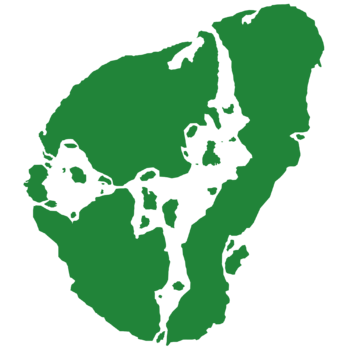 | |
| Capital | Khasde |
| Largest | Medpo |
| Official languages | Esperanto |
| Recognised national languages | Esperanto, English |
| Ethnic groups (2018) |
|
| Demonym(s) | Ionician |
| Government | Federal constitutional republic |
• President | David Terezis |
| Area | |
• | 485,672 km2 (187,519 sq mi) |
| Population | |
• 2016 census | 101,232,872 |
• Density | 208.4/km2 (539.8/sq mi) |
| GDP (nominal) | 2017 estimate |
• Total | $6.376 Trillion |
• Per capita | $62, 980 |
| Gini (2018) | low |
| HDI (2018) | very high |
| Currency | Ionic Credit (₹) ((IC)) |
| Time zone | UTC + 0 |
| Date format | dd-mm-yyyy CE |
| Driving side | right |
| ISO 3166 code | ION |
Etymology
History
Prehistory and Ancient Ionicus
The oldest known human activity on the Ionician islands, a series of rock carvings in the northern desert region, dates to approximately 8000 BCE. By around 6000 BCE, a neolitchic society had begun to develop.
Etc. etc.
Akarovian Empire
Basically just the Romans and stuff.
Feudal Era
You don't wanna be a serf dot com
Modern Era
Oh man these serfs sure are hungry looks like they might start the...
Great Ionician Revolution
1931 - 1932. Provisional government created, gets taken over by Technocrats. Fighting continues until 1935, when Technocrats get full control.
Reconstruction Era
The Reconstruction Era in Ionicus began in late 1935, once the newly founded government of the Ionician Technate had solidified control of the nation. On February 1, 1936, the First Constitution of the Ionician Technate was officially adopted and created the foundations of the new government. Although the Constitution guaranteed several political and social freedoms such as democracy and freedom of speech these freedoms were suspended until order could be restored to the majority of the nation. The early government is frequently cited as an example of a benevolent dictatorship.
The Great Ionician Revolution had destroyed several parts of the nation and crippled the already weak economy. The new government viewed the country as a malplena ardezo or a blank slate for them to fill with the principles of Ionician Technocracy. As a result of this, the phoenix became an important national symbol, as it was thought that the nation would, like the phoenix, rise from the ashes.
Reconstruction officially began in mid 1936 when a four year plan, later referred to as The First Plan, similar in concept to the Soviet Union's five-year plans. This First Plan was limited in scope and aimed solely at reestablishing the basic essentials for the populace following the revolution. Law and order was restored with the new Federal Police Force, temporary housing was constructed for those who had become homeless during the civil war, and many citizens were conscripted to work on farms to end the major food shortages experienced during these times.
When the first economic development plan had ended in 1940, the Second Plan followed immediately afterwards with a proposed length of 5 years. The Second Plan centered around industrial and agricultural economic development. Again, this plan used the Soviet Union's 5-year plan as a basis for its ideas. State-owned farms were created using technologies such as soil science and mechanization and required agricultural workers to attend a basic educational course on modern agricultural techniques. These new state farms effectively ended food shortages and were responsible for the agricultural outputs far greater than had ever been seen before. The industrial economy also began to grow greatly during this time, as constructing new factories commenced after the food crises had been resolved. Industrial outputs at the end of the Second Plan were also higher than had been recorded before, though this was not especially difficult as the industrial sector had been nearly non-existent before this period.
At the end of the Second Plan in 1945, most restrictions on the freedom of speech were lifted, and the economy operated without any major changes until 1950, when the Third Plan was put into place. The Third Plan was the most ambitious plan created both before and since its implementation. The Third Plan would bring major changes to both the economic and social structure of Ionicus and had a 10 year time line. The first accomplishment of the Third Plan was the electrification of all urban centers and some rural areas through the construction of nuclear power plants, hydroelectric stations, and natural gas power plants. Another major accomplishment during the early years of the Third Plan was the relocation and rehousing of the vast majority of Ionicus's populace. Before the Third Plan was implemented the majority of the Ionician population lived in primitive wooden shacks in rural areas. Under the Third Plan, many of these wooden shacks were demolished and replaced with more durable concrete houses with amenities such as television and radio sets and air conditioning; this marked a great improvement in the living conditions for many. The implementation of modern agricultural techniques meant fewer people were required to work in agriculture, leaving many living in rural areas unemployed. The government addressed this by offering unemployed families in rural areas free, modern housing in urban areas in exchange for work contracts.

In order to make better economic decisions for the planned econonomy, the Third Plan also pioneered the use of computers to aid in sophisticated economic calculations and predictions. Economic outputs from factories and farms were sent via telex machines to a central facility in Khasde in near real time. A universal healthcare and educational system were another product of the Third Plan. Concrete molds for schools, clinics, and hospitals were transported all over the nation and filled on site allowing for rapid construction. This eventually led to the popular saying that "all buildings in Ionicus look the same". The Third Year Plan also included social reforms which created the New Ionician Society, an idealistic, highly-educated, egalitarian society. Overall, the Third Plan is considered a major success resulting in rapid and massive economic expansion, vastly improved living conditions, literacy rising from a mere 24.3% to nearly 99%, and life expectancy rising from 44.8 years to 69.6 years.
After the Third Plan ended in 1960, the full freedoms proposed in the 1936 Constitution of the Ionician Technate were allowed. By this time, however, the Technocratic Party of Ionicus had gained the support of most and continued to hold control under a dominant-party system. Another major economic plan would not be created until 1970, when the Fourth Plan, was put into motion. The Fourth Plan, although limited in scope, would have wide-reaching and lasting effects on the Ionician economy. The Fourth Plan was aimed at the expansion of the electronics manufacturing sector and the widespread implementation of computers and robotics in the economy. The Fourth Plan lasted until approximately 1982, when the government allowed for large scale private enterprises to be formed; some aspects of the plan continue today through albeit through alternative means such as subsidization. The Fourth plan is frequently cited for the development and success of computer and automated manufacturing sectors of the Ionican economy which continue to hold great importance in present day Ionicus.
Economic Liberalization
On January 1st, 1982 private ownership of large companies became legalized. Almost immediately, several international corporations began to establish themselves within Ionicus. Ionicus was a prime choice for creating manufacturing and distributing centers due to lucrative automation subsidies and highly educated workforce. The resulting rapid and major economic expansion during this time is commonly referred to as the “Ionician Economic Miracle”. The economic growth stabilized for a brief period during the early 1990s before experiencing rapid growth again during the during the dot-com bubble.
The resultant major economic growth during this period is often looked back as a time of great prosperity for the Ionician people. The major rise in incomes and international trade allowed for many to improve their living conditions and have greater access to good produced internationally.
Contemporary History
1990-onwards
Geography
Climate

Government
Law
Constituent States
| District | Capital | Area (km2) |
Population (2018) | Main Industries | |
|---|---|---|---|---|---|
| District 1 | Medpo | IDK | IDK | Manufacturing, chemicals, transport | |
| District X | ??? | ??? | ??? | ??? | |
| District X | ??? | ??? | ??? | ??? | |
| District X | ??? | ??? | ??? | ??? | |
| District X | ??? | ??? | ??? | ??? | |
| District X | ??? | ??? | ??? | ??? | |
| District X | ??? | ??? | ??? | ??? | |
| District X | ??? | ??? | ??? | ??? | |
| District X | ??? | ??? | ??? | ??? | |
| District X | ??? | ??? | ??? | ??? | |
| Ionicus | Khasde | ??? | ??? | ??? |
Foreign Relations
The primary objective of Ionician foreign policy is to encourage trade between Ionicus and other nations of the world. Ionicus was one of the original members of the E10 Council of Nations. Ionicus is also a permanent member of the XXX_ASTYRIAN UNITED NATIONS THING?_XXX. Although generally seeking to have a policy of neutrality, Ionicus is a member of the Astyrian Treaty Organization. Ionicus maintains diplomatic relations with nearly every country in Astyria and the world. Ionicus is frequently chosen as a nation to act as an intermediary.
The early government of the Ionician Technate was primarily isolationist, with the exception of it's relations with Kobolis. During the 1930s, Ionicus imported large quantities of machinery from the already industrialized Kobolis. During this time, several citizens from Kobolis who were sympathetic to the ideals of the new Ionician government immigrated to Ionicus. In the 1940s and 1950s, Ionicus began opening itself up to trade with the world and began establishing diplomatic relations with other nations.
Military
The Armed Forces of Ionicus are comprised of two main military forces. The Department of Defense administers of the national Army, Navy, and Air Force. The Department of Security is responsible for the National Defense Force and the National Civil Defense Corps. Both military forces are overseen by the Joint Services Command.Generally, Ionicus maintains a policy of neutrality and does not take part in armed conflicts, though it has participated in peacekeeping operations internationally. Participation in the military is voluntary, though participation in the National Service Program which can include a military service option is mandatory. During wartime civilians of any sex may be conscripted.
In 2018, the Ionician Department of Defense reported having approximately 400,000 service members in active duty and just under 1,000,000 reservists. In comparison to most other countries, the ratio of officers to enlisted members is significantly higher. This is meant to allow for a more rapid mobilization of military forces as the training for officers is much longer than the training for enlisted service men.
The Department of Security employs approximately 20,000 service members in the National Defense Force. The National Defense Force which maintains the protection of the mainland and the surrounding sea and airspace. The majority of the National Defense force works in the Naval Division, tasked with coastal defense and enforcing maritime law. The National Civil Defense Corps constructs and maintains a network of bunkers and other military fortifications with about 20,000 full time members. The National Civil Defense Corps also administers a civilian militia, the members of which go through a 8 week basic training course and keep military equipment in their residence in exchange for a modest monthly stipend. The National Civil Defense Corps has 100,000 members in it's militia force, primarily located in rural areas.
Because Ionicus has a small population in comparison to the other nation of Astyria, the armed forces utilize high-tech weapon systems, such as the SASB-2 unmanned stealth bomber, to maximize manpower and an individual soldier's capabilities. Ionicus's National Missile Defense Program operates an advanced network of land and sea-based anti-ballistic missiles, capable of protecting large cities and other areas of strategic importance from ballistic missiles, cruise missiles, and artillery fire. The Ionician Department of Defense, in co-operation with the Ionician Space Agency has launched a number of reconnaissance, GPS, and military communication satellites.
Ionicus is known to posses weapons of mass destruction, having a prominent chemical and biological weapons program throughout the 1980s. In the early 2000s, Ionicus upgraded it's aging intercontinental ballistic missiles to a more modern platform, claiming only to do this as a deterrent to attacks. Beginning in the 1960s, Ionicus required most homes to have a fallout shelter, capable of providing safety to the house's residents in the event of a chemical, biological, or nuclear attack for up to two weeks, however this requirement was eliminated in 1989 and replaced with more liberal requirements. The new requirements require only that a supply cache capable of providing for a buildings inhabitants be kept in the residence. The supply cache includes items such as food and water, gas masks, and radiological measurement instruments; every 5 years items in the kit are replenished and unused ration packs are donated as international aid.
One of 8 nuclear powered Citadel-class ballistic missile submarines.
The SASB-2 unmanned stealth bomber capable of long-range reconnaissance and attack.
The ground-based anti-ballistic missile launcher system, ABMM-12.
Education and Science
Education
Since the era of reconstruction started, education has been a top priority for the Ionician government. The robust and well-funded education system is often cited internationally as being the best in Astyria. All schools, public and private, must be registered with the Department of Education, which oversees all schools and establishes curriculum requirements. The population of Ionicus is one of the most highly educated in Astyria with 68% holding post-secondary degrees and 3.1% holding PhDs.
The educational system is divided into four categories: pre-primary, primary, secondary, and tertiary. Pre-primary schools are offered for children aged 0-4 years old; although the intended purpose of the pre-primary schools is to function as a state funded child care program for working families, there is some educational curriculum, mostly focused on the development of language skills. Attendance at the pre-primary level is not mandatory, though its use is commonplace.
At age 5, school attendance becomes mandatory and the student enters the primary school level. Secondary schools introduce a wide number of subjects such as Esperanto, Mathematics, Science, Civics, Computer Programming, and Health/Physical Education. All primary schools feature a gifted education wing, where the highest performing students are taught advanced subjects. At the completion of primary school, at age 12, students take the Primara Lerneja Eliro Ekzameno (PLE Exam) or Primary School Exit Examination. The PLE Exam is a standardized test which helps a student determine their secondary school.
After a student has completed primary school, they begin mandatory attendance at the secondary level until age 16. Students can elect to go to a specialized secondary school based on the results of their PLE Exam. Specialized secondary schools require a minimum score in certain areas of the PLE Exam, though this can be waived if the student shows exceptional merit in a school’s concentration. General studies secondary schools cater to those who do not wish to attend a specialized secondary school. Examples of concentrations for specialized secondary schools are Computer Programming, Military Science, Engineering, Agricultural Science, and Music.
Following graduation at age 16, students enter the National Service Program, which composes the bulk of the tertiary education system. The National Service Program is a 2 year commitment where a student elects to attend a university, enlist in the military, or serve in the National Development Corps. Participation in the National Service Program is required to become a full citizen in Ionicus. The majority of students attend universities for 2 years, often entering a Mallongigita Teknika Programo, or Shortened Technical Program, a special type of STEM degree that does not require attendance in any classes not related to the core subject. Four year degrees are also offered. Those who choose to serve in the military are placed in positions based on the needs of the Department of Defense and their military entrance exam scores; support positions, such as medic or logistics specialist, are offered to those who are conscientious objectors to war. In the National Development Corps, enlistees work on national construction projects such as dam or highway construction and maintenance. If a participant in the National Development Corps takes on a specialist role which requires on the job training, such as a welder, they are awarded an educational certificate.
After participation in the National Service Program, individuals may elect to enter the workforce, attend a university, which is free for 6 years for any student with an overall grade average of 70%, or join the military with a four year contract. Participation in the National Service Corps is always available to those seeking employment and is mandatory for those who receive certain welfare benefits.
Science

Ionicus is a leading nation in scientific research, primarily in the fields of robotics, life sciences and military technology. Historically, Ionicus has contributed heavily to the fields of nuclear technology, computers, and telecommunications. DEFTELN was a network of military computers established in the late 1960s and is often considered to be one of the precursors to the internet. Research and development spending, as a percentage of the GDP is the highest in Astyria.
Research and development spending is tax deductible, and as such many international companies source their development and design facilities in Ionicus. This has also led to the creation of several high tech products created in Ionicus becoming popular in other nations.
The Ionician Space Agency is one the oldest, best funded, and developed space programs in the world. The ISA operates a network of GPS and communication satellites and several probes to explore the solar system. At its height, the ISA operated a small lunar colony which housed astronauts for six months. The ISA is one of the largest contributors to the Astyrian Orbital Space Station, second to Kobolis.
Economy
The Ionician Economy is categorized as being very highly developed, having high productivity per capita, and as a mixed economy. Ionicus's high quality university education and government policies are often cited as the cause for the nation's prosperous high technology sector. Historically, state-owned enterprises comprised the bulk of the Ionician Economy, but economic reforms in the 1970s through the 1980s allowed for the development of a highly prosperous private sector and a resultant major reduction of state-owned enterprises.
The base of the Ionician Economy lies in the manufacturing sector which comprises nearly 30% of the overall GDP of Ionicus. Nearly all of the manufacturing facilities in Ionicus are automated, due to heavy subsidization of robotic manufacturing equipment given in exchange for a small tax increase. International corporations frequently locate their manufacturing facilities in Ionicus, due to the low automated manufacturing costs. The largest exported goods are machines/electronics (53.2% of exported goods), chemical products (12%) and military hardware (8.7%). The service sector constitutes the majority of the Ionician Economy, with the largest sectors being information technology, finance, transport, and tourism.
Although the majority of industries in Ionicus are privatized, the state still operates several large enterprises. The largest publicly owned corporation is IonAg, which typically produces 85% of the agricultural products made in Ionicus. IonAg utilizes several technologies such as aquaponics and genetically modified organisms to create food security in a nation where there is little arable land. Other publicly owned sectors include energy, arms manufacturing, telecommunications, and water treatment.
Unemployment in Ionicus typically falls between 1-2%, due to guaranteed employment through the government and employment being required for most welfare programs. The average annual wage (nominal) for Ionicus was 46,199 Ionician Credits (88,241 USD). The federal income tax varies widely. The first 15,000 IC (28,650 USD) an individual earns in a year are subject to a 5% tax rate while any earnings over 150,000 IC (286,500) a year are taxed at the maximum rate of 75%.
Workers in Ionicus enjoy a number of benefits. Minimum wage is set based on average living costs in each municipality. Workers a guaranteed a minimum of 2 weeks paid vacation annually and 6 months of paid parental leave for one parent. Vacation time accrued cannot be “lost” although exchanging vacation time for equivalent wages is allowed.
Energy, Infrastructure and Environment
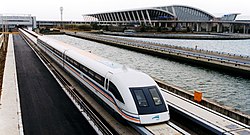
The Ionic Department of Energy provides most of the electricity generated in Ionicus. 56% of all electricity generated in Ionicus comes from nuclear power, as the Department of Energy operates 43 nuclear reactors as of 2018. Solar energy (21%), wind (4%) and tidal energy stations (4%) comprise the renewable energy sector. The remaining electrical generation comes from hydroelectric (8%) and natural gas (13%) primarily sourced from landfill gas. In 2005, the Ionician government announced plans to decommission all nuclear reactors by 2040 and have them replaced with renewable energy sources; as of 2018 17 reactors have been decommissioned. Energy usage efficiency within Ionicus consistently scores very highly, with several government initiatives such as mandated insulation requirements in all new buildings.

Biodiesel, generated from algae, dominates the fuel markets, followed by natural gas, ethanol and petroleum products. The Ionic Department of Energy heavily subsidies the manufacture of algae biodiesel, making it economical for usage in most vehicles. Due to low fossil fuel reserves, the Ionician Government thought it strategically necessary to develop its energy independence, hence the low usage of fossil fuels.
Automobiles are the most popular form of transportation, although rail transportation is incredibly popular due to high fuel prices. The Ionician publicly managed road network spans nearly 1.5 million km (932,057 mi). A network of unlimited speed toll roads form the National Highway System which connects all cities. The Ionician National Rail System consists of high speed maglev trains for passengers and lower speed rail lines for the transport of goods. Nearly all goods are transported by rail.
The Ionician government is highly protective of its environment, as one of the main principles of Ionician Technocracy is harmony with the natural world. Even as early as 1934, legislation was introduced to minimize pollution. The 1950s through the 1970s would see major expansion of environmental legislation as the government created large subsidies for clean industries, constructed nuclear power stations, expanded its recycling program, and began encourage solar and wind use in buildings. The distinctly Ionician Fabakag facilities, pioneered by Dr. Karesinda, began appearing in significant numbers during the 1980s. Fabakag facilities combine a manufacturing facility (usually chemical), a water treatment plant, and a hydroponic farm into one complex, utilizing aspects of each to eliminate pollution.
Ionicus is one of the only countries in the world with negative carbon emissions. Ionicus was the creator of the Khasde Protocol, an international treatise on preventing climate change. Recycling is an important part of waste management in Ionicus, typically reporting that around 80% of all recyclable materials were recycled. Organic waste is used in the generation of synthetic natural gas, an important resource in the Ionician economy. Illegal garbage disposal, such as littering, is met with strict punishment and heavy fines. Citizens in the National Development Corps can be assigned with jobs such as litter collection or tree planting.
Demographics
Population
Language
Religion
Officially, Ionicus is a secular state, although freedom of religion is guaranteed in the Constitution of the Ionician Technate.
Health
Housing
The majority of housing in Ionicus is privately owned, however the government owns and operates several public housing projects throughout the nation.
Culture
Architecture
Television and Film

Cuisine
For much of it's history until the mid 1930s, following the Great Revolution, Ionicus suffered from food insecurity due to a combination of limited arable land and poor agricultural techniques, such as two-field system. Food availability increased during the 1940s due to new government policies aimed at maximizing agricultural output.
Modern Ionician cuisine has its roots in the 1950 National Agricultural Modernization Act, a collaboration between the National Agricultural Agency and the National Health Agency. The Agricultural Modernization Act established a basis for which crops and livestock would be grown based on cultivation requirements and nutritional content. Initially, these changes in agricultural production where not well received by the populace, as several once familiar food items became scarce. To remedy this, several books containing recipes making use of the new crops were distributed and the populace became more acclimated to the new foods in the following years.
The main staple foods which comprise the bulk of the Ionician diet are rice, legumes, and oats. Quinoa is becoming another important food source, with plans to expand its cultivation underway. Fruits and vegetables, typically locally grown in gardens or urban vertical farms are highly available and are a major component in many Ionician meals. Food produced by livestock varies widely in availability depending on the variety. Foods that can be produced without the slaughter of an animal, such as eggs and milk, are widely available and offered at low prices. Seafoods are also widely available due to the countries extensive coastline and use of aquaponics. Other meats, particularly beef, are expensive, as the agricultural system of Ionicus produces low amounts of these foods due to environmental concerns, ethical concerns, and low caloric output in relation to resources required compared to other food sources.
jiewnfeuif gotta write about the meals n stuff

